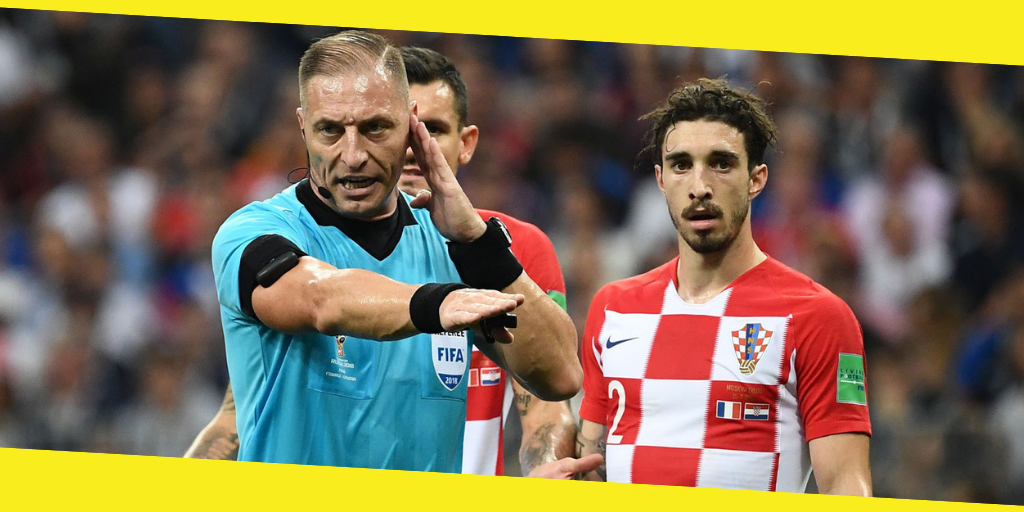Top Reasons Why Technology Is Necessary in Sports
This post was last updated on November 20th, 2023

Sport and technology have always been intertwined. As technology has developed and advanced, so has its involvement in sport, particularly at the professional level.
In fact, the involvement of technology is so vast and ever-present in nearly every facet of sport – from data analysis and photo finishes in horse racing to golf equipment and helmets – that an entire book, or indeed website, could be dedicated to it.
So here, we are focusing on a particular type of technology in sport, which has been developed and then introduced to eradicate doubt, level the playing field, and give referees and umpires some much-needed assistance.
Recommended: The Evolution of Athletics: Technology’s Impact on Sports
In tennis, the introduction of hawkeye and its variants have been a resounding success. First introduced in professional tournaments in 2006 and fully rolled out in 2007, hawkeye – which visually tracks the trajectory of the ball using images and timing data captured by high-speed cameras placed at various locations around the court – has all but eliminated human error.
Players are allowed two incorrect challenges per set and a third should it go to a tiebreak. Like all technology, the transition has not been seamless, but hawkeye and its implementation in tennis has been a welcome addition to the sport, even adding to fan involvement and drama.
Indeed, in a sport like tennis, where the contentious issues are usually limited to whether a ball is in or out, the introduction of such technology is not too complicated. In the sports of moto GT Racing, gamers and racing lovers now converting to Simulation Racing Gadgets to enjoy the all craze at home with real feel accessories.
Similar to what happens in cricket, where the development of the Umpire Decision Review System (DRS) has assisted umpires in determining whether a batsman is out. DRS, which is composed of television replays, hawkeye (or similar ball-tracking technology), snickometer (which detects small sounds), and hot spot (an infra-red system that shows what the ball has contacted) was officially launched in 2009.
Like its tennis counterpart, DRS has not been without issues or complaints, but it has undoubtedly contributed to reducing the mistakes made on the field of play.
Now for football, or soccer (if you are from the United States), technology has been the center of debate for a long time, but seemed to have finally conquered the spotlight, being added to the two main broadcasted competitions of the sport: the World Cup, where VAR was introduced last year, in Russia, and the European Club Champions League, where it was added in this last February.
Goal-line technology has seen a seamless introduction and it changed games already, like in the last Juventus – Atletico Madrid game, where the second Cristiano Ronaldo goal was added to the scoresheet thanks to this innovation. Besides from this, VAR (video assistant referees), which allows the man with the whistle to check about penalties, handballs, possible red card fouls and much more, has been criticized, even though it undeniably helped to make ref calls much clear.
It’s not difficult to see why. Goal-line technology, much like hawkeye in tennis or DRS in cricket, is used only to determine one simple outcome – in or out. Observers can’t argue with the findings – the ball either crossed the line or it didn’t.
VAR, on the other hand, has caused so much debate due to the subjective nature of many football rules. What one referee might deem a penalty offence, handball, red card, or yellow card, another may not.
Just take a look at two Champions League matches who were target of debate between fans and pundits: Paris Saint Germain x Manchester United and F.C. Porto x Roma. Both games were decided with a late penalty call and the decisions, even though they were explained by UEFA itself, were still target of many controversy and accusations of bias.
Another added complication is the offside rule: if a player is through on goal and flagged for offside – but is found on review to be onside, what happens then? Football has too many dimensions and nuances for these sorts of technologies to ever work seamlessly.
It doesn’t help, either, that VAR technology still needs a lot of refining, or at the very least the way it has been integrated into football. Referees running over to watch replays on a TV screen while a team of analysts in a room scour over every angle of an incident has not helped VAR add to the football experience the way hawkeye has in tennis, or even DRS in cricket. It feels disrupted, rather than inclusive.
One option that has been commonly suggested is that both teams, like in tennis and cricket, are given a limited number of challenges, and once they are used up, tough luck. The other is, to avoid over-complication, limiting VAR to penalty decisions, thus using the technology to clamp down on divers and cheaters.
As VAR continues to make its way across global football, there are still many issues to solve, both with its technology and its general implementation.
Still, one thing we have learned over time, technology will never stop evolving, so there is always hope that one day it will be advanced enough to make VAR as universally accepted in football as hawkeye is in tennis. Or else, soccer fans and experts will just have to accept that the sport is subjective and controversial ref calls are part of the game we love.
Recommended For You
Using Roller Hockey Wheels
Most Inside
Most Inside offers high-quality recommendations and valuable updates to enhance all aspects of your life, providing premium guidance and enriching experiences.




